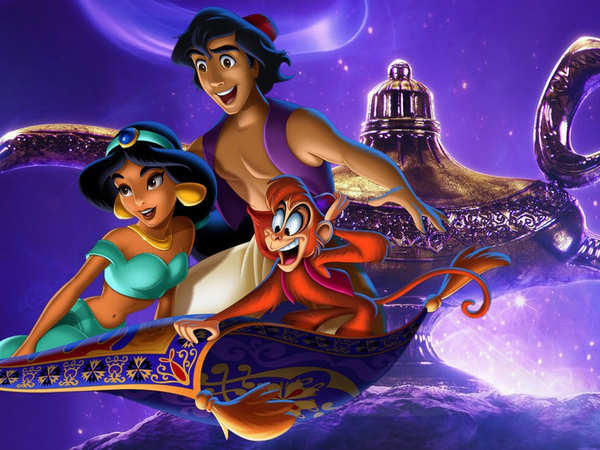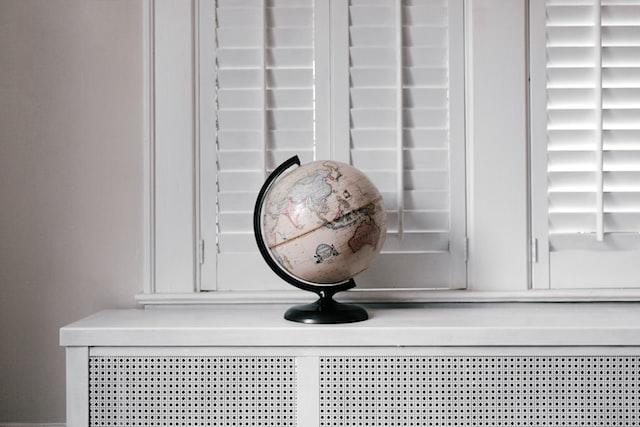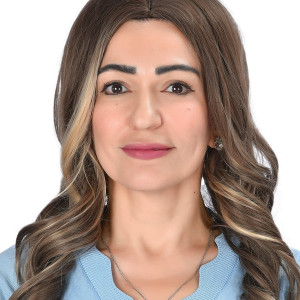You have to know the past to understand the present. -Carl Sagan
You've probably heard your History teacher saying this quote during your lessons.
But this principle generally applies to any field.
Whether you are studying Biology, Mathematics, Arts, or French, you are bound to study their past formulas, past findings and past grammar structures before you proceed to directly apply what you have learned in a whole new context.
In other words, if you are learning a totally new language like Arabic for the first time, it makes perfect sense to learn the history behind the language and how the language has evolved thus far.
That's why in this article, we will be looking at Arabic from a cultural and historical perspective as well as reviewing the relevance of the language in our society today.

What Are The Countries That Are Using Arabic As Their Official Language Today?
At present, Arabic is the sixth most spoken language in the world, especially in many Middle Eastern and African countries.
Historically speaking, Arabic is part of the Semitic language and has since emerged from the first century and is used by those who are staying in the Arab world.
Following the spreading of Islam over the centuries, Arabic has since become the official language of the countries whose official religion is Islam.
While Arabic has a general writing system that consists of 28 alphabets, the spoken language has slightly different pronunciations, dialects and even accents depending on different countries.
Now, let's take a look at the list of countries that are using Arabic as their official language.
- Egypt [Situated between Africa and Asia]
- Iraq [Western Asia]
- Jordan [Western Asia]
- Kuwait [Western Asia]
- Algeria [North Africa]
- Bahrain [Western Asia]
- Chad [Africa]
- Comoros [Africa]
- Djibouti [Africa]
- Lebanon [Western Asia]
- Libya [Africa]
- Mauritania [Africa]
- Oman [Southwestern Adia]
- Palestine [Western Asia]
- Morocco [North Africa]
- Qatar [Western Asia]
- Saudi Arabia [Western Asia]
- Yemen [Western Asia]
- United Arab Emirates [Western Adia]
- Tunisia [North Africa]
- Syria [Western Asia]
- Sudan [North Africa]
- Somalia [Africa]

Photo by Soner Arkan (Pexels)
Isn't this list a great motivation to learn Arabic? By mastering Arabic, you'll be able to travel to these countries with ease. You can read more about the benefits of learning Arabic in this article.
What Are Some Malay Words/English words That Are Derived From Arabic Language?
You'll be surprised that the Arabic language is incredibly influential and it is actually embedded in many of our daily conversations as Malaysians.
Trust us, you're in for some surprises because they are closer than you think
Here are some interesting examples.
Arabic loan words with Islamic significance (Malay)
Granted that Arabic is the official language of Islam, it's no surprise that many Malay words that are related to Islamic principles have Arabic roots.
- Takaful
You'll probably see this term in the context of banking and Islamic insurance coverage. Takaful is derived from the Arabic word, takafala which means "guaranteeing each other".
- Halal
This is another familiar term that Malaysians will see whenever food is concerned. Halal is an Arabic word which means "permissible".
- Haram
While haram is commonly viewed as a negative word in Malay, it is derived from the Arabic word alharam which means forbidden. This includes context like food, relationships, business ethics and even inheritance.
- Jamek
If you have passed by a mosque, you'll probably notice this term. Jamek comes from the Arabic word jami which means a place where people gather to worship.
Arabic loan words that are commonly used in the Malaysian context (Malay)
Next, let's look at other common Malay words with Arabic origins.
- Selamat
The word Selamat which means safe and is normally used in greetings like Selamat Pagi is derived from the Arabic word salamat (blessings and peace).
- Sejarah
Sejarah which means history (origin, past events, studies of the past) is derived from the Arabic word sajara.
- Tarikh
There is an exact word in Arabic ta rikh which also implies the concept of time and date.
- Khamis
Khamis is derived from the Arabic word, al-khamees which is also used to describe Thursday.
English words with Arabic origin
Finally, let's review some English words.
- Sugar
The word sugar is derived from the Arabic word alsukar with Sanskrit origins from the word shakara.
- Safari
Safarii derived from the Arabic word Safar which means journey.
- Coffee
A modern staple drink at any time of the day, the word coffee is derived from the Arabic word qahwa. The coffee-drinking culture was first populated in Arabic countries like Yemen.
- Tariff
Tariff which means taxes on goods and services that are imported from other countries is derived from the Arabic word ta rif which holds the meaning of notification or information. Studies have shown that this is a concept that is practiced by many Arab and European traders for bookkeeping purposes in the past.
Now that you have gained some insights into some Arabic words and their relationship with some familiar Malay or English words, you can also look into this article to learn some tips to boost your Arabic language learning journey.

What's The Relationship Between Jawi And Arabic?
It is not a surprise that most Malaysians are sometimes confused between the usage of Jawi and Arabic. Some of us would even use these two terms interchangeably without knowing the true differences between them.
We are here to offer some clear distinctions between these two terms.
Point 1: Jawi has Arabic roots but it is a script and not an official language like Arabic
In simple terms, Jawi is known as the Malay language that is written in Arabic script. Jawi is not a language on its own whereas Arabic is an official spoken language. Jawi is used by the predominantly Malay-speaking Muslim community while Arabic is mainly spoken in the Arabic region.
Point 2: Jawi was the official writing system used in the Malay archipelago before the Malay language adopted the Latin alphabet system
Remember those mentions of Batu Bersurat Terengganu in Jawi scripts during your Form 4 Sejarah lessons?
It indicates two things. Firstly, the Malay archipelago has been using Jawi as its dominant writing system. Secondly, it also means that Islam arrived in Malaysia during that period of time.
In terms of the Malay writing system, the Malay Jawi script has since been replaced by the Roman alphabet system that we are all familiar with today. But it is still widely used in official documents and religious texts.

Photo by Pok Rie (Pexels)
Point 3: The modern Jawi that Malaysians learn today has 6 additional letters phonemes (Malay) apart from the original 28 classical Arabic letters
Another thing that sets the Jawi script and Arabic apart is the additional six phonemes to accommodate the Malay pronunciation in a better manner.
- Ca
- Nga
- Pa
- Ga
- Nya
What Are Some Famous Arabic Literature/Stories That You May Have Heard Of?
Another engaging method to learn more about the history of the Arabic language is to immerse yourself in some famous Arabic literature and stories.
To be honest, you might have even heard or read of them when you were younger. Some of these stories have even been adapted to the big screen over the years.
Here are three famous Arabic stories that you will enjoy reading (again) with a new perspective.
1. Ali Baba and the Forty Thieves
This is the legendary Arabic folktale that coined the super catchy phrase "Open Sesame".
The story talks about two brothers, Ali Baba and Kassim and their adventure with the forty thieves who stored up their treasures in the cave.
Spoiler: One of them died, and another one nearly died but was saved by a quick-witted maidservant.
2. Aladdin's Wonderful Lamp
Some of us probably have memorized the lyrics of A Whole New World while we watched the scenes of Aladdin and Princess Jasmine on the magic carpet as a child.
Well, the actual story differs from the Disney version.
Spoiler: The genie was not released by Aladdin through the final wish and Aladdin became a real royal in the end.

Source: The Economy Times
3. Sindbad The Sailor
Another story that has been adapted as an animation, Sinbad the Sailor is a tale of a hero from Baghdad who went through seven different voyages facing enormous challenges across the seas of East Africa and South Asia.
Don't forget to explore these resources to learn Arabic.
What Can You Do To Learn More About The History of Arabic Language in Malaysia?
If you prefer a hand on and direct approach to learning more about the history of the Arabic language and exploring the cultural elements of this language, we have two suggestions for you.
Visit the Islamic Arts Museum Malaysia
Located in Kuala Lumpur, you can engage in many activities such as bookbinding exhibitions, have a tour of the whole place, attend seminars and workshops and even dine in to enjoy some Middle Eastern cuisine at the Moza Restaurant.
The museum is open every day from 9:30 am to 6 pm to the general public.
Hire an Arabic tutor
As you are learning the language from a tutor, your Arabic tutor can also share with you some interesting historical details of the language in between your lessons.
It's killing two bird stones, seriously.
We highly recommend you to find an experienced Arabic tutor at Superprof.
With just a few clicks, you can easily connect with an Arabic tutor that fits your personal preferences in terms of your maximum budget (hourly rate), teaching experience, teaching mode and teaching methodology.
Just head to the Superprof Malaysia homepage and start browsing the tutors' profiles now.
Also, you can read this article to learn more about Arabic as a beginner before your first lesson.
Remember, you can have a fun and fulfilling Arabic learning adventure when you understand the amazingly rich history of this language!















